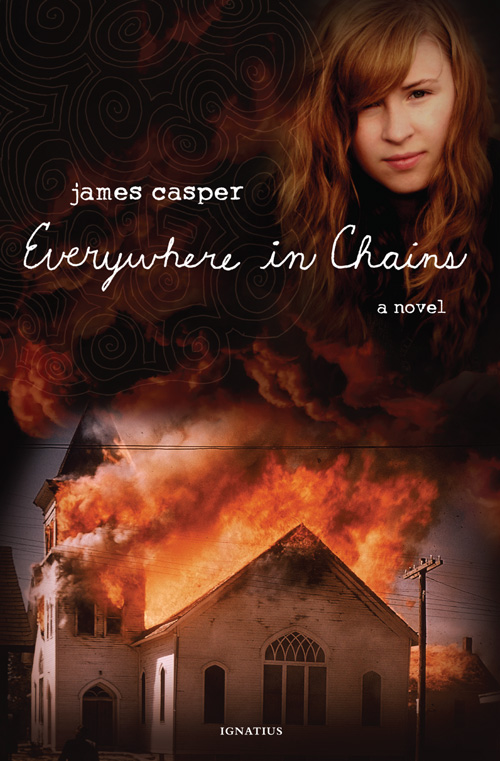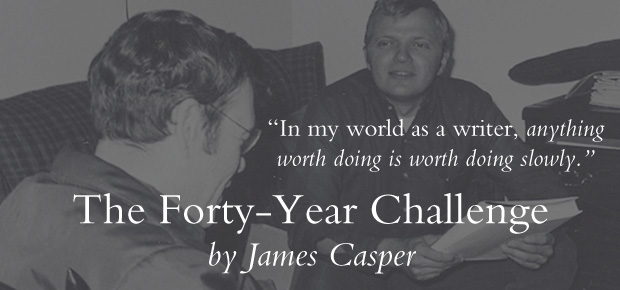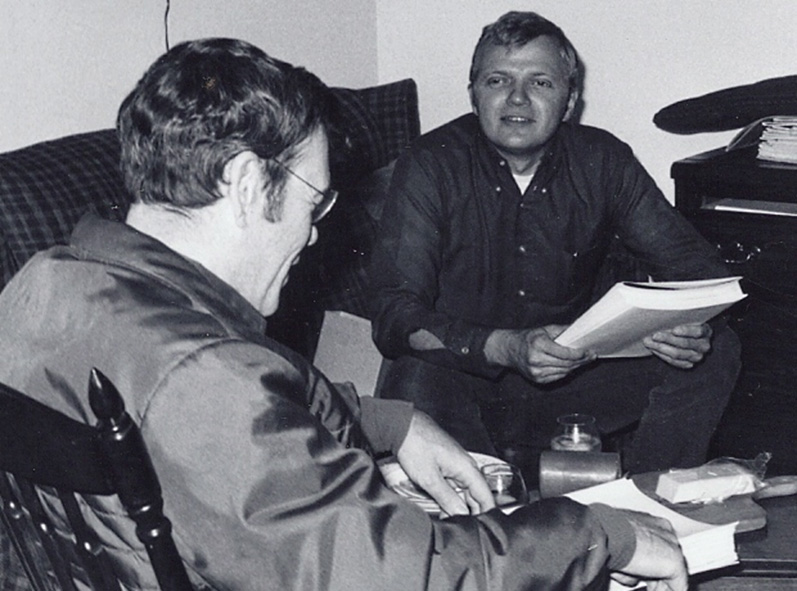Not long ago, a former student asked me when I had first ‘gotten serious’ about writing stories. This, of course, is a ‘loaded’ question, and so I replied that I no longer remembered. At my age, now seventy-three, you can get away with evasions like that.
In truth, it was a long, long time ago. Somewhere back then, I found myself with a teaching colleague at a northern Minnesota university. His name was Jon Hassler. He would become one of the past century’s most prolific Catholic novelists. Before that happened, we would meet at a local bar after classes and talk about writing while we sipped Old Crow‑and‑water from tall glasses.
“Always ask for a tall glass”, Jon advised. “You get more whiskey that way.” We were young.
If you want to know how long ago this was, let me add that a round of drinks cost eighty cents. Leaving change for a dollar on the table between us, we had eighty cents left over after four rounds, enough for a fifth and last one. By the time we finished up and were about to stagger home, we were full of whiskey and the sort of novel‑writing fantasies English teachers will entertain even when sober.
It was not all tipsy daydream as matters turned out. Old Crow is said to have been the preferred Kentucky straight bourbon of General Ulysses S. Grant, a man of action if ever there was one. Inspiration must have been in it somewhere.
Jon Hassler and I collaborated on a volume of short stories given the title Ten Indians, with each of us contributing five. As a publishing project, this went nowhere, but it proved to be remarkably good for both of us because the effort set us on writing pathways suiting our individual motivations, talents, and ambitions.
Jon’s stories were eventually published separately, and three of mine, drawing upon my Red Lake Indian Reservation experiences, are in a manuscript novel, a first‑person Father Ulrich chronicle called St. Brendan’s at Turning Wind.
Apart from a background in northern Minnesota reservation country, Jon and I had in common experiences as youths growing up in southern Minnesota, mine on a farm and his in a small town named Plainview. I used to say to him that differences in our approach to fiction came as a result of this: he was a busy town kid who had little time to reflect; I was in the nearest town maybe twice a month, and the rest of the time wandered among forests and cornfields thinking about what I had seen. This shows: his novels breeze along while mine spend long stretches pondering. The latter approach does not work very well in this age of page‑turners, but as a beloved, seriously overweight cousin responded when a physician told him to lose weight: “I can’t help it. This is what I am.” He had a point. Take a hundred pounds off dear Bob, and he would no longer have been Bob.
Jon and I had also shared a Catholic upbringing and memories of local characters whose personalities formed in a world before watching and imitating television sitcom characters made everyone look and sound alike, as they also do in a lot of novels these days. We also had in common a world where Sunday mornings meant church, not simply skipping that part of it and going somewhere for breakfast. Our novels are chock‑full of memorable rural and small‑town philosophers, humorists, and storytellers, characters like Fred of Ed’s, Felix, and Ralph Corrigan in Everywhere in Chains.
Almost from the start, Jon and I would read to each other from our writing‑in‑progress. Thus I heard full length his Four Miles to Pinecone, Staggerford, and Simon’s Night, which bears my name in its dedication. Jon in turn waited patiently while I read mine, pausing to scribble in revisions with a wooden pencil as I went along: he heard my novels The Picture Taker; the The Far End of the Park; and then a real flop called The Buff Willow Organdy.
We shared our failures and successes alike. Since his was a prodigious talent, he had many successes, so many that he found a better teaching position and moved away. His parting advice to me was pretty good as it turned out. He said: “Write for people with a third or fourth grade reading level—that is what I do. If you aim much higher than that, they will never understand.” Like my cousin Bob with his weight problem, Jon also had a point.
It almost ended there, except for something I recalled while hanging a painting in my living room three years ago. Jon Hassler and I, with ‘Old Crow in a tall glass’ in hand, had once challenged each other to write a novel in which a pen pal misrepresenting himself becomes a central plot element. This had led my late colleague into the worlds of his novels Green Journey and Dear James. I penciled out a few lined pages of something called A Passage for Penelope and set them aside. I still have them somewhere.
This was the beginning of Everywhere in Chains. Four decades had passed, my old writing chum along with them, while I was living in London. My wooden pencils and fountain pens had become manual typewriters; then electric ones; then a ponderous computer, and finally a laptop, one aptly named Air. Meantime, old pages darkened to various shades of yellow and brown. Dusty manuscripts were piled on the floor at my feet, where they are today as I write this. Young upstarts came along with their breathless pieces written at warp speed.
I was seventy years old. I had been writing off and on for almost a half‑century and had not paid much attention to publishing. The painting in my living room was an early one by Jon Hassler, when he was an amateur with oil paint. It was of an old school house on a desolate farm field. After a while, we both knew it was not very good. I remembered my pen pal story while trying to keep that school house centered on a picture hook and wondering why it still meant so much. Then I remembered how we had challenged each other to write a pen pal story. I had yet to do it.
 Ten weeks later, on November 30, by coincidence Mark Twain’s birthday, I finished a first draft of what became Everywhere in Chains, 73,000 words with a pen pal pretender, an old guy named Felix, hobnobbing around in it. Once in a while, even old guys win a race. As a result, I pocketed a few dollars and that flush that comes with winning a county fair ribbon. The genial ghost of Jon Hassler had urged me on with a challenge not yet met. The barren fields of his painting became fields in my novel Everywhere in Chains. The old school house even made a brief appearance there.
Ten weeks later, on November 30, by coincidence Mark Twain’s birthday, I finished a first draft of what became Everywhere in Chains, 73,000 words with a pen pal pretender, an old guy named Felix, hobnobbing around in it. Once in a while, even old guys win a race. As a result, I pocketed a few dollars and that flush that comes with winning a county fair ribbon. The genial ghost of Jon Hassler had urged me on with a challenge not yet met. The barren fields of his painting became fields in my novel Everywhere in Chains. The old school house even made a brief appearance there.
Once again, Jon Hassler and I stood together ‘by brooks too broad for leaping’—as we used to think of our writing challenges in bygone years—quoting the poet A. E. Housman. Somehow we both made it to the other side, the professional and the amateur. In the amateur’s case, it just took longer to get there.
In my world as a writer, anything worth doing is worth doing slowly. To quote my late cousin Bob once again: “I can’t help it. This is what I am.”








Jayne S
November 2, 2014 at 8:37 am
Your book, Everywhere in Chains, relates the “ripple effect” of clergy abuse so well – this is why people that read the book feel it is so relevant. Kudos to you!